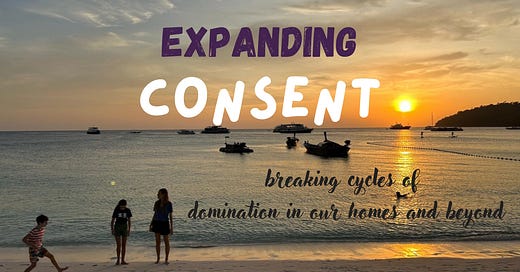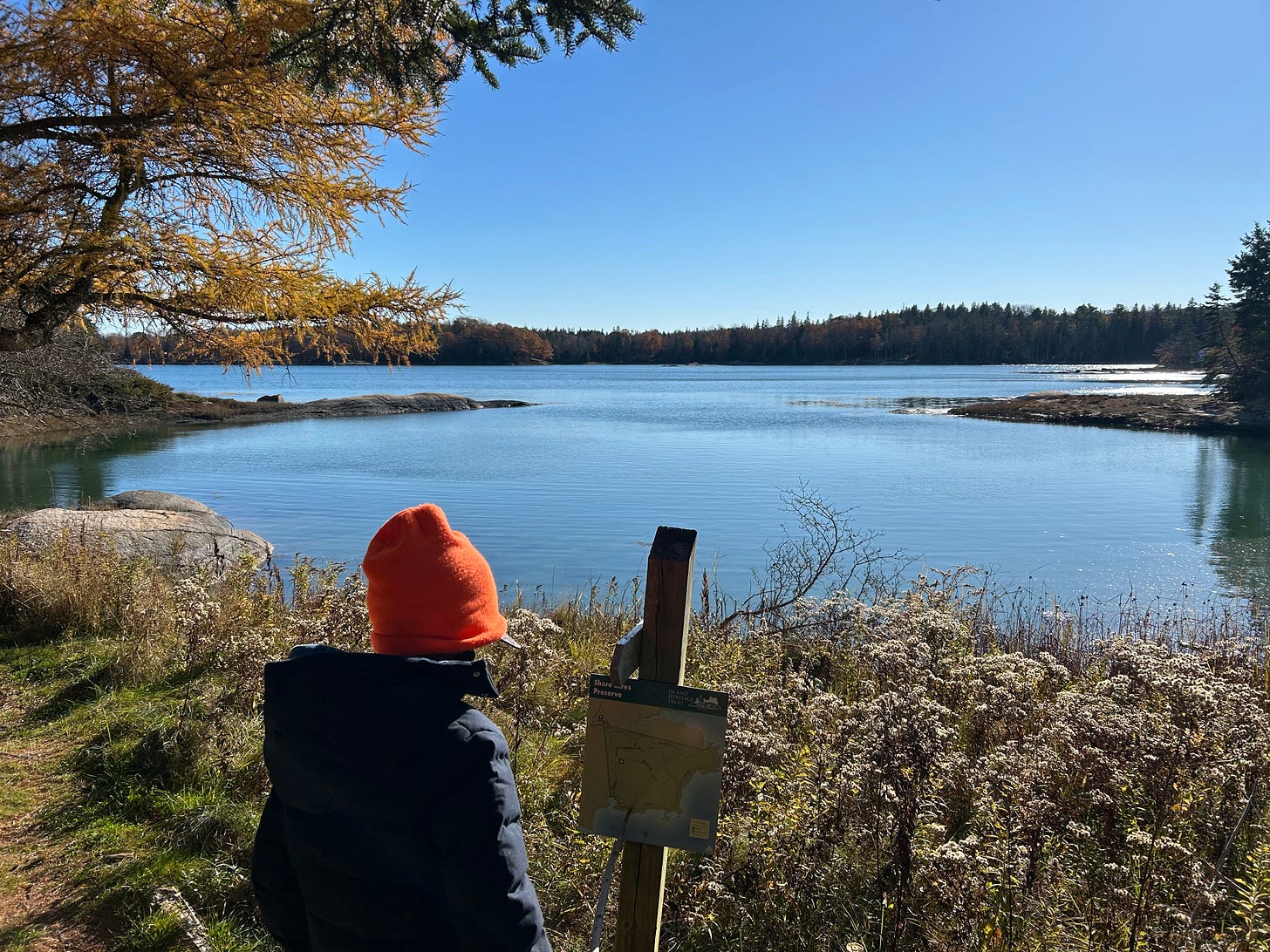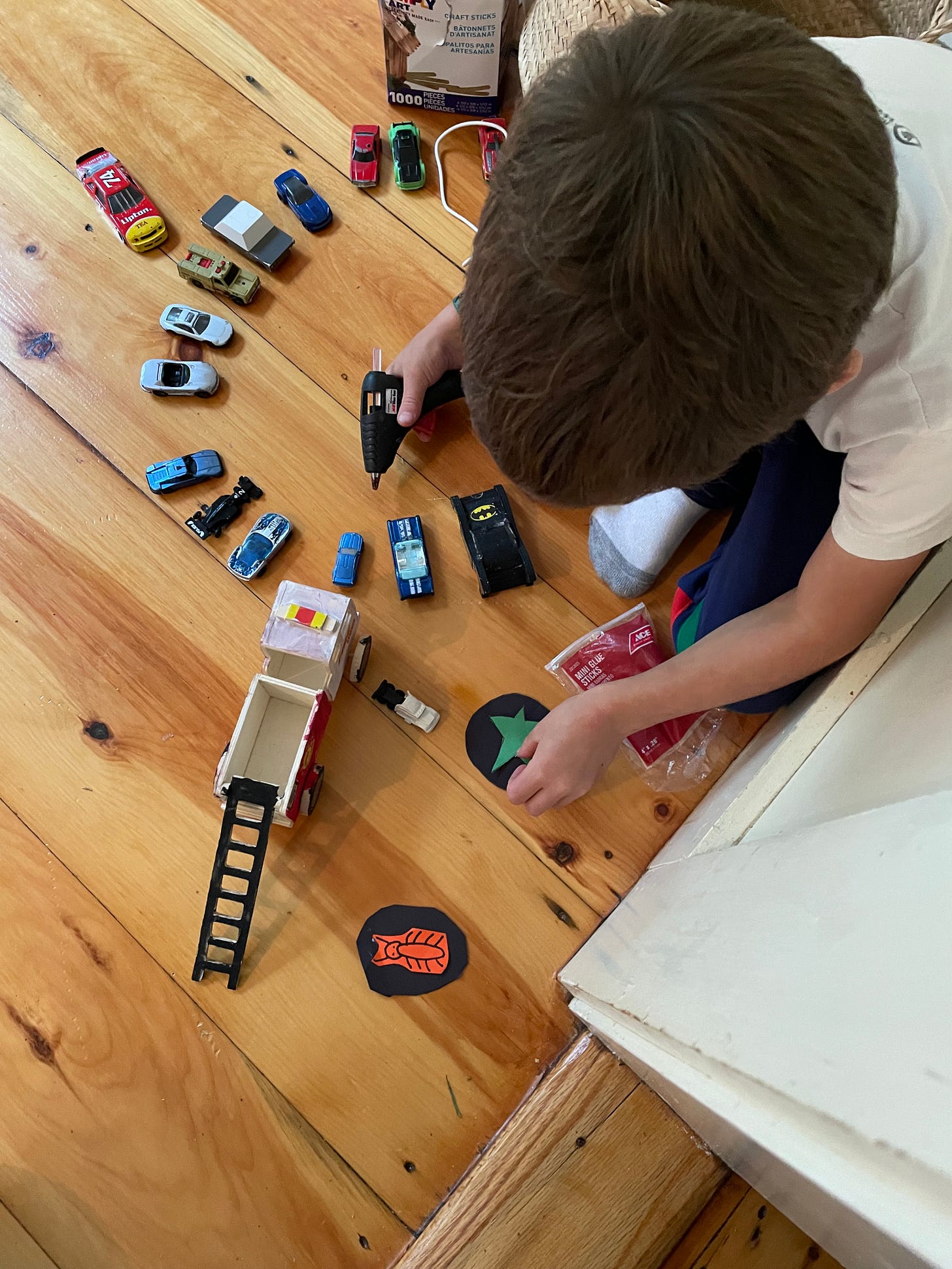Making collaborative decisions
On how we make consent-based decisions and agreements. This is Chapter 16 of my book, Expanding Consent.
This is Chapter 14 of my book, Expanding Consent, all about the ways we live in with our children in a consent-based way, and how this expands out into the other places we inhabit and the world at large. It is free to read for all subscribers, but please consider supporting my work by sharing or becoming a paid member.
You can catch up on previous the chapters here. If you missed Chapter Fifteen, Consent is a Practice, you can read it here.
Chapter Sixteen
Decision-making in practice
But what is the process for making consensual decisions?
This is a process I’ve been going through with my children. It’s sociocracy-inspired but makes allowances for some of the ways sociocracy just doesn’t work for my children, and many neurodivergent children, and also for the fact that each family is going to have different tensions around how far they want to take negative consent.
Everyone has a voice
In sociocratic decision-making (I talked more about Sociocracy in Chapter 14), everybody’s voice matters. So we make space for everyone in our family, or the setting me might be in (which is sometimes a book club, our co-op space, or a homeschool group) to accommodate everybody’s voice.
One of Sophie Christophy’s Guiding Principles for her consent-based, self-directed communities, is shared decision-making and conflict navigation, and it is defines as: “Young people should have the chance to influence and co-create decisions and solutions that affect them. We can understand and manage risk together, and conflict can be navigated in an open and honest way.”
I encourage my children to express their opinions, emotions and ideas through the language of needs or wants, or to focus on their own feelings about an event or thing, because often this comes across as less blamey and judgmental, and more about us than the other person. This principle is part of Non-Violent Communication, a method developed by Michael Rosenberg and expanded upon from a decolonial lens by Meenadchi, and while we don’t really “do” NVC I have found it helpful to shift the focus in the ways I communicate.
The process
The way I have made consent-based decisions in our family and in groups I’ve held, is rooted in the sociocratic process, but is not exactly it.
I want to be clear about the fact this is not the only way to make consent-based agreements, nor is it even the main way we use as a family. For one, it’s simply too long for many of us. However, I want to walk you through the sociocratic decision-making process in full so that you know what it looks like, before we get to the real talk!
1. We gather ideas and information – anybody can chime in, we try to speak one at a time, or I might make notes on a piece of paper to make sure we catch everybody’s ideas. I used to rush through this bit, anxious to get to the decision-making, but I recognize how important it is now for everyone to be heard, even if their ideas don’t get picked up.
2. Someone makes a proposal – A proposal sounds a bit like, “I think we should go to the museum first, and then have lunch,” or “How about we research the Indus Valley Civilisation next week” or “L will do one game on the ipad, and then P can have it for drawing.”
3. People ask questions to clarify – Anyone can ask questions and the holder of the proposal can answer. This sometimes feels confrontational and can go downhill, quick, especially in a family. I’ve found this more viable to do in a small group rather than at home. To facilitate it, we have also talked about how to ask questions from a place of curiosity, rather than as a covert attack. It takes practice. Questions might sound like, “How do we get from the museum to the restaurant?” or “What do you like about the Indus Valley?” or “How long is one game?”
4. People make objections, or suggest changes – Sometimes the objections round gets mixed up with the questions round, but bear with me. This is an ideal situation I’m describing here, NOT how it necessarily goes down in my home. Objections might sounds like, “What if we get hungry at the museum and it’s not time for lunch? I think we should do lunch before the museum” or “I kind of wanted to do 2 games,” or “I was keen on doing Ancient Egypt next week.”
5. A new proposal is made, or the proposal is altered – This will be based on the questions, objections or changes, such as “Let’s bring snacks to the museum so whoever is hungry can have some,” or “How about we do Indus Valley next week and Ancient Egypt the next?”, or “Perhaps L can do 2 games then, and then P will get to have the ipad the rest of the time.”
6. Consent round – consent will sounds like No Objections: basically a willingness to give it a go, knowing it can always be modified if needed. If there are objections, then you go back to step 4.
If there is consent, we put it in writing so everyone remembers it. (Side note: this has been super key for us because people have historically forgotten what we agreed, and that has led to a ton of dysregulation/arguments.)
Neurodivergence and consent as an agreement
The truth is, that the process of consent as an agreement has not always worked for us. I’m not sure it’s really designed with neurodivergent kids in mind, especially not ones that are anxious or have very heightened nervous systems or are demand-avoidant or all of those at once!
My most succesfull consent-based decisions were probably made in small groups of children in our co-op, or at groups I’ve hosted. At home, the dynamic changes and my lived experience is that the process becomes very messy!
We’ve had many a moment when a decision needed to be made and one or both children refused to gather. We’ve had moments when they joined in but simply refused to budge on their objection, or had one thing in mind and didn’t want to consent on anything other than that. We have had a ton of stalemate, meetings that ended in shouting and tears and meltdowns, meetings I have stormed out of, and just half-heartedly made decisions that nobody was into – and every other way this could possibly go wrong, has gone wrong at least once.
Except, it didn’t go ‘wrong’. This is normal. Consent as an agreement is HARD WORK.
Conflict is a good thing, as well as inevitable. Conflict is how we get to know one another, how we built closeness and togetherness, how we learn where people’s boundaries lie and how we figure out how to live in community.
There is no way to circumvent or avoid conflict.
This can be really triggering and confronting, especially for those of us who grew up avoiding conflict and difficult emotions. It can also be hard for those of us, like me, who grew up surrounded by a lot of loud, emotional conflict that was hardly ever resolved, and now struggle to take everybody from conflict to consent because the process is so foreign and so emotionally hard.
It is hard for everyone. But it is also how we get ourselves seen, heard and known. How we form strong bonds that don’t crumble at the first sign of instability. How we dig deep roots in places and people and ways of being. This – this whole process – is where all the learning happens. It is the very essence of being human in a world full of other humans. We are learning how to live, and our children are learning with us. Embrace the conflict. You may not come out the other end for a long time, but eventually you will.
The short version that works for us
Sometimes gathering your whole family together is not an option. People might live apart for periods of time, or people might find it too hard to gather and pay attention to a whole back and forth conversation. That is okay.
Here are some things we have done instead to reach consent as a agreement, when engaging in the process of decision-making felt too hard.
- I have spoken to each child separately, taken notes, and shared ideas and proposals separately with each child
- I have skipped directly to the proposal stage, and been open to objections or to consent
- We have done a shortened, ND-friendly version of it, much like this:
Decision-making, the real life version
I explain the issue.
One round of everyone says whatever they want to say
I ask for ideas and if there is silence, I make a proposal. Usually someone else has a proposal, so I write it down.
Questions and objections are raised. We make amendments or changes. (Sometimes nobody objects and we can skip to the next bit. If changes are made then we come up with a new proposal accordingly.
We ask for consent, which basically means everybody needs to be willing to try it.
If there is still debating to do, we go back to Step 4. Eventually we will all consent to something!
This is not perfect, but remember: none of this is then written in stone and forever needs to be carried out. It is only ever good enough for now, safe enough to try. You can literally change it again tomorrow, if needed.
My only disclaimer is that if we make a fixed agreement, we try it for a few days at least. This is simply because sometimes fixed agreements can feel like a stretch, the first few times. Once our brains have adapted to them however, it gets easier. But we need to give ourselves time. If it’s been a week and things are obviously still not working out, we gather again, learn from our blunders, and try something new.
Perhaps we decide to drop the need for the agreement altogether, or perhaps we find another way forward we can all get behind. This is so intensely personal and you will need to figure out what really matters to you, and how much it matters, or whether it’s something you may not even need to have an agreement around.
For example, we have a fixed consent as an agreement that we do not physically harm others, ourselves or objects. This was agreed years ago and it matters to all of us, because none of us want to be hurt. We are all behind this. We do not want to drop it. However, sometimes it does feel like a big ask and people get hurt. That’s okay. Fixed agreements are there because we want them to be there. When we mess up, that’s just normal. We make amends, and we carry on. We don’t drop the agreement because it “didn’t work” this one time.
On the other hand, years ago we had an agreement around only eating at the table. It was an agreement we all made together, but I often found myself reminding my children to sit while eating. It got annoying for me, and for them. It transpired that not only did they not really care about sitting at the table, but they actively found it inconvenient, annoying and sometimes just too much of an ask. We talked about it, I did some serious asking myself what really mattered and what I could let go of, and we made a new agreement. We sit at the table for dinner, but other than that we don’t enforce sitting at the table. If you’re not at the table however, we agreed you need a bowl or plate to catch crumbs or you need to clean up after yourself. My kids now automatically grab a bowl whenever they snack, because they don’t much like sweeping up crumbs from the floor. I had to remind them a lot initially, but now they just do it. It works for everyone. Do I wish they always sat at the table? I mean, maybe? But really, who cares? I eat on the sofa too at times and I love it.
How do you know what matters?
I cannot tell you what matters, only you and your family can. We talk about the “why” behind things a lot. Why eat from a bowl? Because otherwise you spread crumbs everywhere and we’re all stepping in your food. Because food attracts ants. This makes sense to them. I feel super grumpy when I have to clean up after everyone, and they don’t enjoy cleaning much, and this seems like a good compromise. Did it require practice? Well, yes of course. What is worth it? Absolutely.
No crumbs on the floor all day every day matters to me. Not having to help me clean all the time matters to them. Having more time where I’m available to play because I’m not cleaning, matters.
Sure, I could not clean. And I don’t clean much, actually. I don’t have particularly high standards of tidiness or cleanliness. Which is also why I do expect everyone to at least attempt to not trash the house on a daily basis. This matters because we are all calmer when the house isn’t dirty. This is me, though – it doesn’t have to be you. Perhaps cleanliness is bottom of your list, in which case, who cares! This doesn’t matter to you.
In support of knowing what’s coming
I know better than to say children (or people!) need structure. We do not. There is no uniform child and no uniform set of needs. Only you can know whether you would benefit from some fixed things in your life, or not.
Fixed consent is only helpful if it actually helps you. If it helps you, and your child, and your family feel safe, cared for, regulated and calm.
Some children thrive on impulsivity, and others will need structure.
For our family, a solid rhythm has always helped us to know what’s coming (so we’re not constantly negotiating), to keep us accountable to the things we commit to, and to feel held.
We have a duty of care
Not everything has to be consent-based. I touched a little bit on this in the last chapter when I spoke about fixed parts, but I want to speak to this more.
Sometimes, we do get to just decide. Sometimes, our children do need a little bit of a nudge. For me, the first step is to figure out if this is something that really matters – not because societal pressures tell me it does, but because it is consistent with my values and it holds up in the face of challenges and deschooling.
Once I know this, then I recognise that sometimes I do have more information or experience than my child. Sometimes, I am actually more invested in caring about their future than they might be in that moment, because I’m perhaps better able to see that far, or simply care more in that moment. Sometimes, I do know more.
In those moments, we need to inhabit our autonomy as adults and speak up. This doesn’t mean we’ll force or coerce or dominate – it simply means we also have a voice that matters.
Some of us, especially those of us unschooling, often feel like any interference is coercion and I don’t believe this to be true. We are still parents for a reason. We are not bystanders, and we still have a degree of power because we also have the responsibility to care for our children. The power we hold as adults enables us to do what we need to do to be responsible.
While I think consent matters in so many ways, sometimes consent is not the main thing. The trick is to know when that’s the case.
In the next and last chapter, I will pull all the pieces of this book together and expand them out to talk about the ways consent is personal, but also political and systemic, and how it is a throughline in the ways we exist with and relate to one another.
Thanks for reading!
If you are on the fence about becoming a paid member, I now have a monthly book group as a perk for paid subscribers. Our first month is June! Find out more about it here.
Thank you all for being here, I’ve had so much fun sharing this book with you all.







